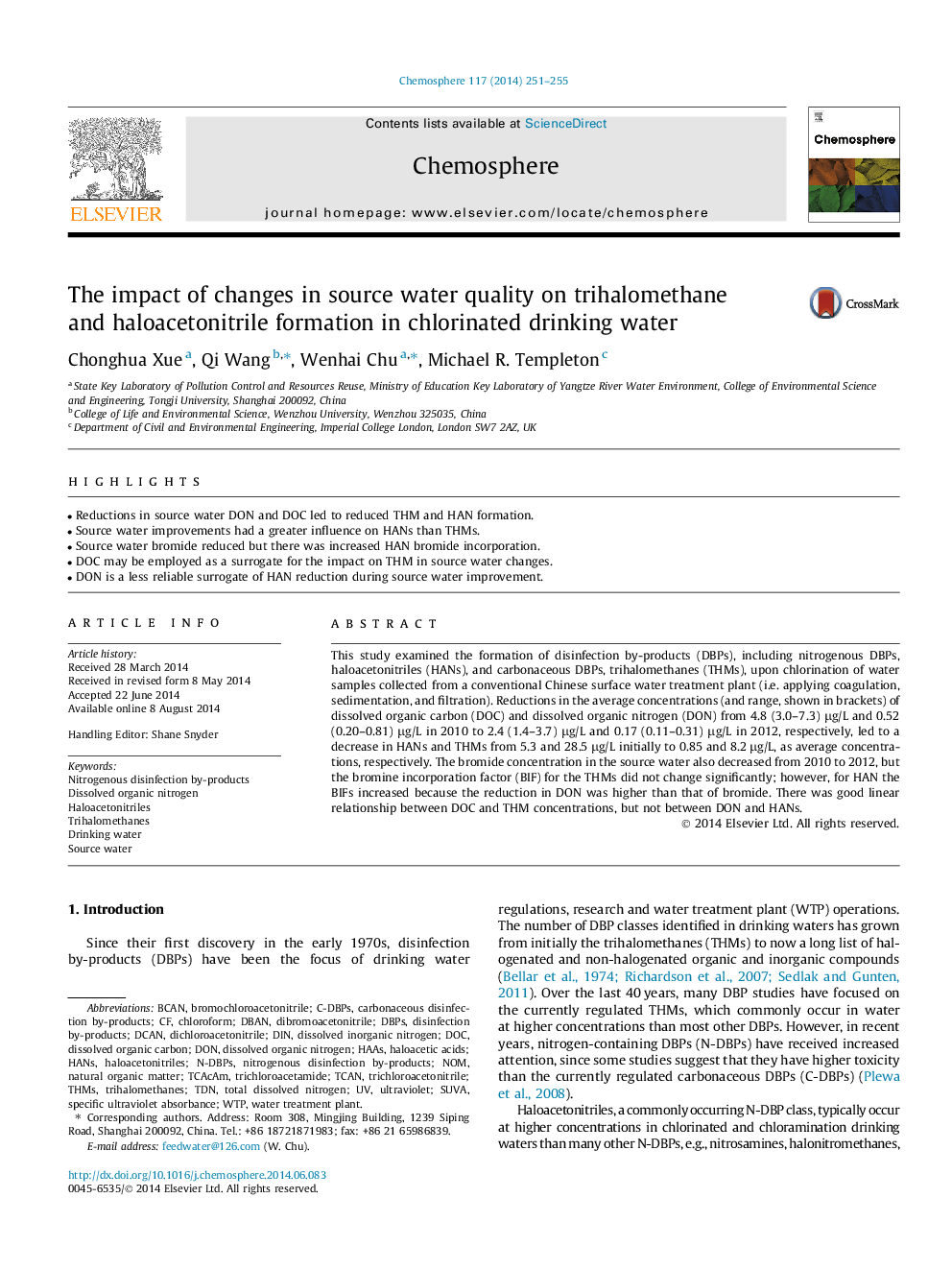| Article ID | Journal | Published Year | Pages | File Type |
|---|---|---|---|---|
| 6308434 | Chemosphere | 2014 | 5 Pages |
â¢Reductions in source water DON and DOC led to reduced THM and HAN formation.â¢Source water improvements had a greater influence on HANs than THMs.â¢Source water bromide reduced but there was increased HAN bromide incorporation.â¢DOC may be employed as a surrogate for the impact on THM in source water changes.â¢DON is a less reliable surrogate of HAN reduction during source water improvement.
This study examined the formation of disinfection by-products (DBPs), including nitrogenous DBPs, haloacetonitriles (HANs), and carbonaceous DBPs, trihalomethanes (THMs), upon chlorination of water samples collected from a conventional Chinese surface water treatment plant (i.e. applying coagulation, sedimentation, and filtration). Reductions in the average concentrations (and range, shown in brackets) of dissolved organic carbon (DOC) and dissolved organic nitrogen (DON) from 4.8 (3.0-7.3) μg/L and 0.52 (0.20-0.81) μg/L in 2010 to 2.4 (1.4-3.7) μg/L and 0.17 (0.11-0.31) μg/L in 2012, respectively, led to a decrease in HANs and THMs from 5.3 and 28.5 μg/L initially to 0.85 and 8.2 μg/L, as average concentrations, respectively. The bromide concentration in the source water also decreased from 2010 to 2012, but the bromine incorporation factor (BIF) for the THMs did not change significantly; however, for HAN the BIFs increased because the reduction in DON was higher than that of bromide. There was good linear relationship between DOC and THM concentrations, but not between DON and HANs.
